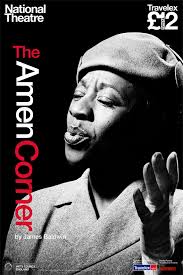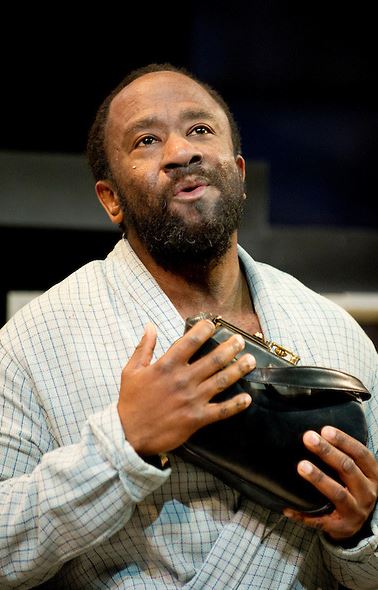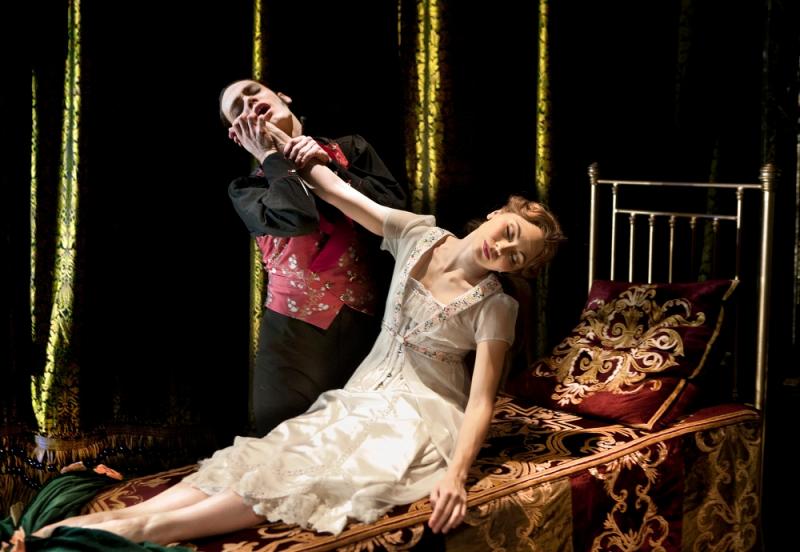I had never been to the Southwark Playhouse before. It has a seating capacity of 240 and is designed so you enter through quite a large bar, get funnelled down a corridor then into the auditorium. Sound ok? Not on one of the hottest days of the year when the queue to get into the auditorium to nab one of the un-numbered seats joined the scrum in the bar and all the time the temperature went up or was that just my blood boiling at the sheer ineptness of fringe theatres to get a house in? If you don't want to piss off your audience NUMBER YOUR BLOODY SEATS. The Menier Chocolate Factory started off like that but has now entered civilization so come on! Is there to be *no* progress?
Added to that tsouris we had the always fresh hell of the musical theatre drama students shrieking their heads off at each other allied to the seething hiss of the aged show queen. I wouldn't put it past them to say they knew the band on the ill-fated ship.
Although this was the first time I had seen the show performed I have always been a huge fan of Maury Yeston's score thanks to the 1997 Broadway cast recording. The derision that greeted the news of a Titanic musical lasted up to it's opening in April with mostly negative reviews but the show found an audience and lasted for nearly two years - indeed, although James Cameron's film opened in December 1997, it actually helped increase the show's attendance rather than the reverse as had been suggested. At award time, the show's director and cast were all ignored but it won each of the five Tony Awards it was nominated for including Peter Stone's book, Yeston's score and the big one, Best Musical.
By far the best component of the show is Yeston's score which takes in a wide range of contemporaneous musical styles of 1912: he gives us ragtime trots, Gilbert & Sullivan pastiches, stirring Elgar-esque themes, hymns, folk airs, all filtered through a traditional Broadway score of ballads and up-tempo numbers. As much as I like Yeston's scores for GRAND HOTEL and NINE, his TITANIC score hits greatness with it's sweep of intimate and epic moments.
The design for the show was a simple bare floor stage, a moveable metal staircase and a single upper level/balcony which you entered under. To get to the seats you walked past Greg Castiglioni as Thomas Andrews, the designer of the ill-fated ship, scribbling away at his desk. Despite this, director Thom Sutherland took the opening song away from him, allocating it instead to Simon Green's J. Bruce Ismay, the owner of the White Star Line who famously not only pressurised the Captain to increase speed but who also survived by jumping into a lifeboat. This production started with the cast shouting abuse at Ismay who turns to the audience and sings IN EVERY AGE.
The production boasts a cast of 20 which is remarkable for a production this size, Broadway boasted 37 cast members. Of course this meant them rushing off as a 3rd class Irish immigrant to emerge minutes later as a 1st class millionaire but it's to the cast's credit that they all still managed to give strong, definable performances. There were a couple of dodgy ones - Castiglioni's important second act solo MR. ANDREWS' VISION was horribly over-sung - even if he did had to contend with a platform tipping up underneath him (maybe I have explained him not singing the opening number?) I was also praying for Jonathan David Dudley's Bellboy to drown, preferably five minutes after leaving Southampton.
But these were more than compensated by the very fine performances which were full of character, more than are given them in Stone's good but rather spare book: Green's Ismay was superbly hissable while James Austen-Murray stood out as the stoker Barrett. His solo number, setting up the class divisions within the ship, was excellently sung, even if he had to contend with the distracting modern dance interpretations of shovelling coal around him! His duet THE NIGHT WAS ALIVE with Matthew Crowe's radioman Harold Bride was also a stand-out, it was almost staged as a love song between the two men which certainly added a frisson to the number.
Celia Graham was very good as 2nd Class passenger Alice Beane, eager to mix with the upper echelons (vocally better than Victoria Clark on the cast recording) and as her disapproving husband Edgar, Oliver Hemsborough delivered a strong character above and beyond what the book provided for him. James Hume was fine as Etches the 1st Class steward and Siôn Lloyd was in fine voice as Officer Murdoch, although Stone's book propagates the unsubstantiated story that he shot himself as the ship sank which goes against what several credible eyewitnesses said.
Victoria Serra made a spirited Kate McGowan travelling to America with a hope for the future of herself and her unborn child while Dudley Stevens and Judith Street made the most of their touching ballad STILL, sung as their characters Isador and Ida Strauss prepare for death on the sinking ship rather than be separated.
These were the cast members who stood out for me but the ensemble singing was wonderful too on such numbers as GODSPEED TITANIC (a number that always gets my tear ducts going), LADIES MAID, NO MOON, WE'LL MEET TOMORROW and the FINALE.
Thom Sutherland's direction was very good given the constraints on his production and David Woodhead's design made invention out of necessity. Howard Hudson's lighting also contributed to the show's overall success. Although I would have loved to have had Yeston's sweeping score played by a full orchestra - as it was meant to be heard - Mark Aspinall's band of only six did well. It was also a nice touch for the show to end with the names of those who died in the tragedy scrolling up the stage. Indeed all the characters in Stone's book are based on real people aboard the ship although he does play God and alter a couple of fates to suit his story.
 Although the show was running late, we stayed behind as - totally unbeknownst at the time of booking - Maury Yeston was actually there to give a talk with the ever-gushing critic Mark Shenton. Now answer me this... why have the cast all head-mic'd for the show but not provide even hand-mics for the interview? Sadly most of what Yeston had to say about the genesis of the show, his other works and his thoughts on musicals in general was *just* audible from where we were sitting - and as I said it's not that big an auditorium. Again the cluelessness of this theatre just seemed to end up standing on my one good nerve.
Although the show was running late, we stayed behind as - totally unbeknownst at the time of booking - Maury Yeston was actually there to give a talk with the ever-gushing critic Mark Shenton. Now answer me this... why have the cast all head-mic'd for the show but not provide even hand-mics for the interview? Sadly most of what Yeston had to say about the genesis of the show, his other works and his thoughts on musicals in general was *just* audible from where we were sitting - and as I said it's not that big an auditorium. Again the cluelessness of this theatre just seemed to end up standing on my one good nerve.
But I am very happy that I had the opportunity to finally see TITANIC - and in such an inventive production - so as to fully understand how this excellent score serves the show.





















.jpg)


























